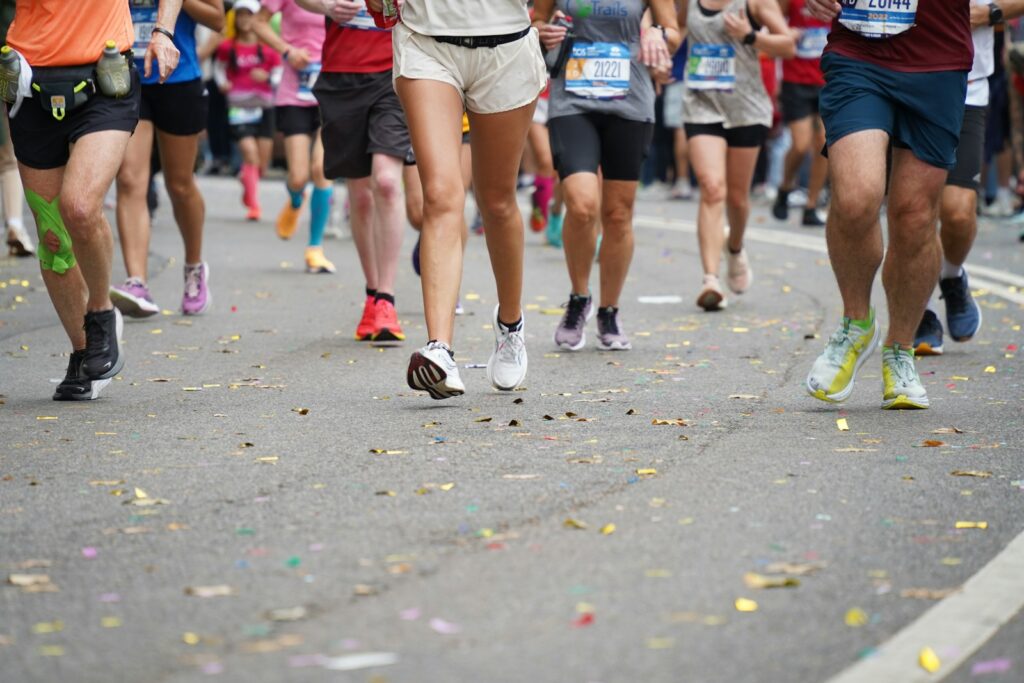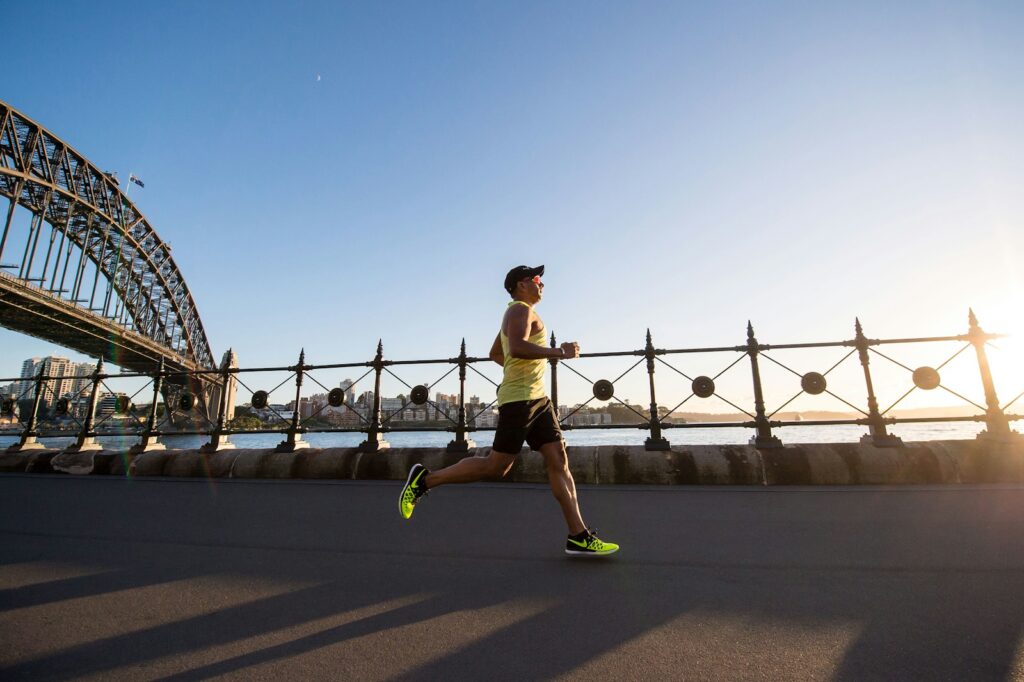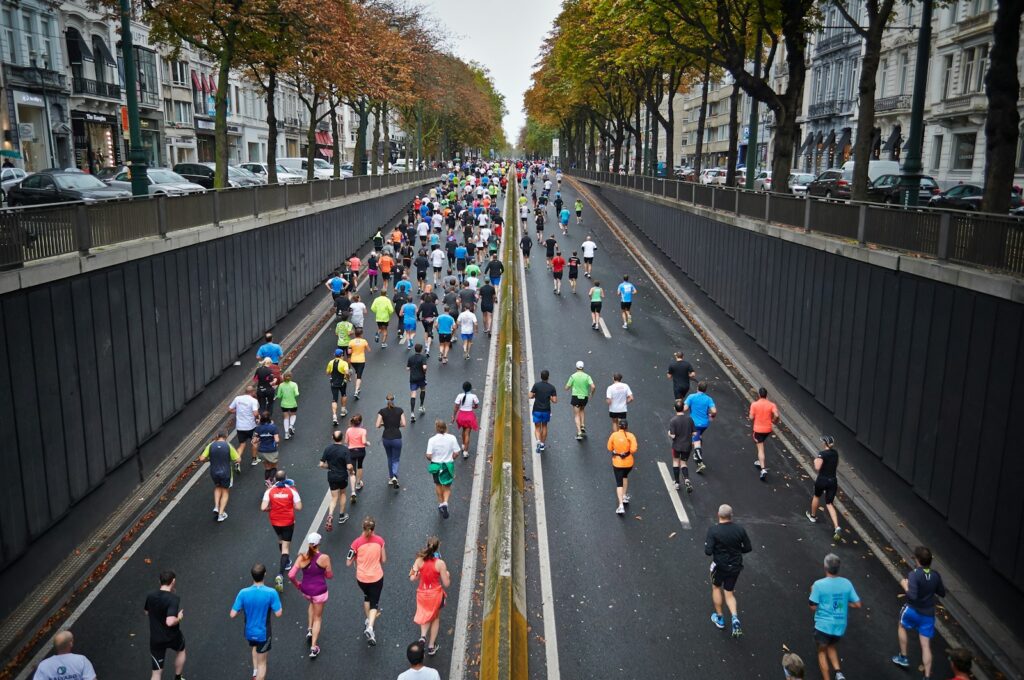
The allure of the marathon is undeniable, a challenge that beckons to the depths of human endurance and spirit. For many, the thought of covering 42.195 kilometers (approximately 26 miles 385 yards) on foot seems like an insurmountable feat, yet it’s a goal embraced by hundreds of thousands worldwide each year. Stepping up to the starting line of a marathon is more than just a physical act; it’s a commitment to a journey, an exploration of personal limits, and a testament to perseverance.
Embarking on this incredible adventure requires not just desire, but also a solid foundation of knowledge and a deep respect for the distance. As you contemplate joining the ranks of marathon finishers, understanding the core elements of this legendary race is your very first step towards a safe and rewarding experience. This guide aims to equip you with crucial insights, drawing from the rich history and global tapestry of marathon running, ensuring you approach this challenge with confidence and preparedness.
To conquer the marathon and savor every mile, it’s essential to arm yourself with accurate information and a practical mindset. We’re here to help you lay that groundwork, transforming what might seem like a daunting task into an achievable and exhilarating pursuit. Let’s dive into the foundational knowledge that will empower you to begin your marathon journey wisely, minimizing risks and maximizing the joy of the run.
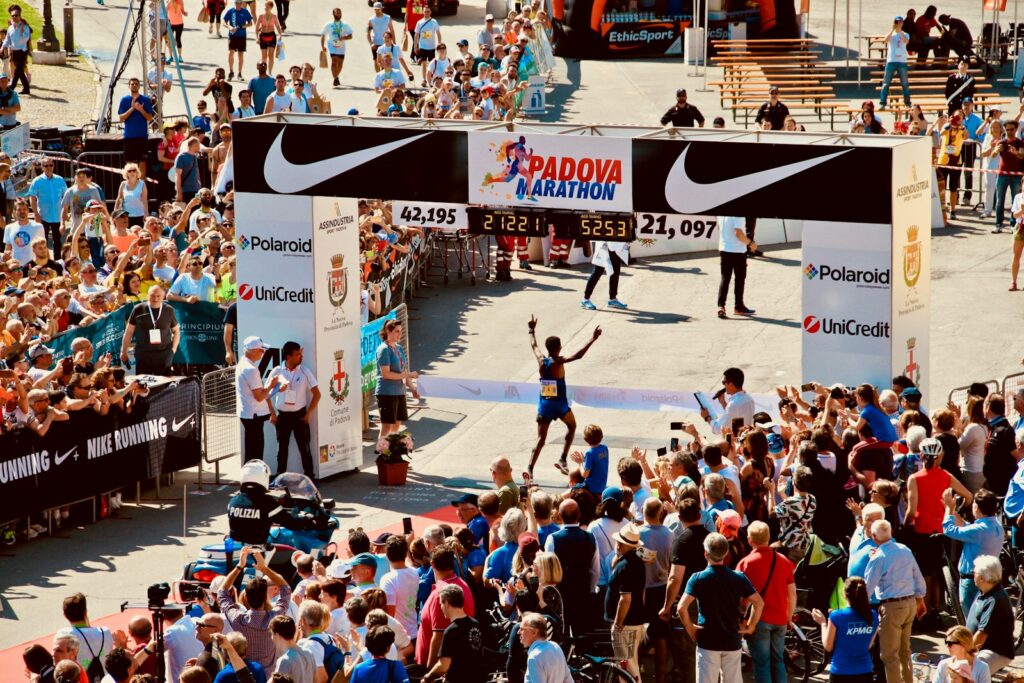
1. **Step 1: Understand the True Marathon Distance**Before you even lace up your shoes for your first training run, it’s absolutely paramount to grasp the precise definition of the marathon distance. This isn’t just a long run; it’s a very specific long-distance foot race that measures 42.195 kilometers, which translates to approximately 26 miles and 385 yards. This exact measurement is not arbitrary; it’s a globally standardized distance that every marathon runner commits to conquering.
Knowing this exact distance helps you frame your training and set realistic expectations. The marathon can be completed by running continuously or through a strategic run/walk strategy, which offers flexibility for runners of all levels. However, the sheer length demands respect and preparation. More than 800 marathons are held worldwide each year, and the vast majority of participants are recreational athletes, highlighting that this challenge is accessible to many who are properly prepared.
The standardization of this distance is a relatively modern development. While the marathon was one of the original modern Olympic events in 1896 in Athens, its exact length wasn’t precisely fixed at first. Early Olympic marathon races were approximately 40 kilometers, roughly the distance from Marathon to Athens by the longer, flatter route. It wasn’t until 1921 that the International Amateur Athletic Federation (IAAF), now World Athletics, officially set the standard distance at 42.195 km, directly adopted from the length used at the 1908 Summer Olympics in London. This historical context reinforces that while the idea is ancient, the precise challenge you undertake today is a product of modern athletic governance.
Read more about: Driving Expert’s Clever Hacks: Mastering Safe Backing and Crowded Area Navigation to Eliminate Guesswork
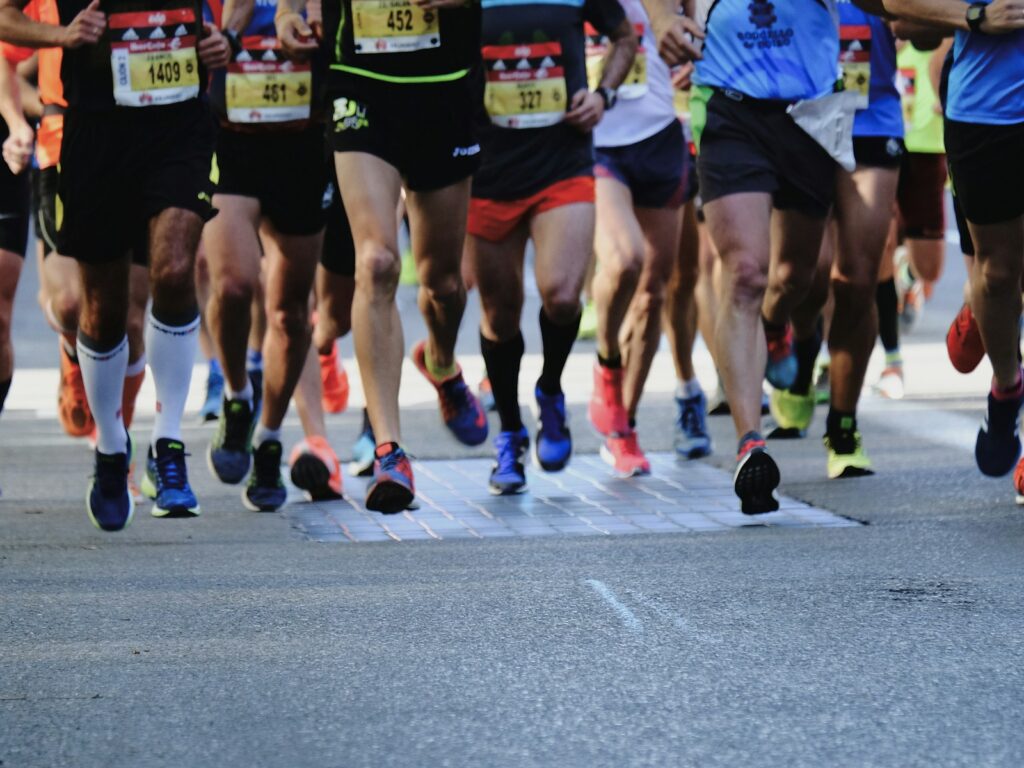
2. **Step 2: Appreciate the Race’s Rich History**Every stride you take in marathon training connects you to a story stretching back to Ancient Greece. The very name “Marathon” originates from the legend of Pheidippides, a Greek messenger who, according to lore, ran the entire distance from the Battle of Marathon to Athens. His legendary exclamation, “we have won!”, before collapsing and dying, imbues the race with a powerful narrative of triumph and ultimate sacrifice. This profound origin story is an integral part of the marathon’s mystique and an enduring source of inspiration.
While the historical veracity of Pheidippides’ specific run from Marathon to Athens is debated—with accounts first appearing centuries later and variations in the messenger’s name and route—the core idea captured the imagination of modern Olympic founders. The Greek historian Herodotus, for instance, mentioned a messenger named Philippides running over 240 kilometers each way from Athens to Sparta for help, but not a direct run from Marathon to Athens. Regardless of the exact historical details, the vivid imagery from Robert Browning’s 1879 poem “Pheidippides” cemented this composite story in popular culture, making it an accepted historical legend that continues to inspire runners today.
Michel Bréal, a French philologist, was inspired by this ancient Greek story and proposed the marathon as a centerpiece event for the first modern Olympic Games in 1896 in Athens. This idea gained strong support from Pierre de Coubertin, the founder of the modern Olympics, and the Greek hosts. Thus, the marathon, a creation blending ancient legend with modern athleticism, became a cornerstone of the revived Games, recalling the glory and endurance of classical Greece. Understanding this deep historical tapestry can add a profound layer of meaning to your own marathon journey.

3. **Step 3: Recognize the Evolution of Olympic Marathons**The marathon’s journey from an ancient legend to a global sporting phenomenon is particularly highlighted through its evolution within the modern Olympic Games. Since its inception in Athens in 1896, the Olympic marathon has been a prestigious event, captivating audiences and showcasing incredible feats of endurance. The very first Olympic marathon was a male-only race, won by a Greek water-carrier named Spyridon Louis in 2 hours, 58 minutes, and 50 seconds, a truly remarkable performance for its time.
Over the decades, the Olympic marathon has seen various courses and finishes, each adding to its rich tapestry. The 2004 Summer Olympics, for example, honored tradition by running the marathon on the original route from Marathon to Athens, culminating at the historic Panathinaiko Stadium, the very venue of the 1896 Games. This blend of historical routes and modern competition underscores the event’s enduring appeal. While the course for each venue has varied, the commitment to the spirit of the race remains constant.
It has become a cherished tradition for the men’s Olympic marathon to serve as the grand finale of the athletics calendar, often held on the final day of the Olympics. The medal ceremony, frequently incorporated into the closing ceremonies, adds to the event’s iconic status. Recent Olympic marathons, such as those in London (2012) and Rio de Janeiro (2016), have even embraced urban backdrops like The Mall and the Sambódromo, demonstrating how the race adapts while retaining its core essence. This continuous evolution reminds us that while the challenge is timeless, its presentation can be as dynamic as the cities that host it.

4. **Step 4: Acknowledge Inclusivity in Marathon Running**As you embark on your marathon journey, it’s inspiring to recognize that this challenging distance is increasingly a testament to inclusivity and perseverance for all. While the early Olympic marathons were exclusively for men, the landscape of long-distance running has transformed dramatically. Pioneering women broke barriers, gradually paving the way for full recognition and participation in official events, demonstrating that the human spirit of endurance knows no gender.
Throughout history, individual women defied the norms, even before official inclusion. Stamata Revithi ran the marathon distance in 1896, though her efforts were not recognized in official results. Later, Marie-Louise Ledru in 1918 and Violet Piercy in 1926 achieved early milestones, with Piercy being credited as the first woman to be officially timed in a marathon. These early trailblazers laid crucial groundwork, setting the stage for future generations of female runners.
The official recognition of women in marathoning in the United States began with Arlene Pieper in 1959 at the Pikes Peak Marathon. This was a significant moment for female participation.
The Boston Marathon, one of the world’s most prestigious races, saw iconic moments with Bobbi Gibb running unofficially in 1966, and Kathrine Switzer making history in 1967 as the first woman to run “officially” with a race number, despite initial resistance. These events were pivotal, culminating in the introduction of the women’s marathon at the 1984 Summer Olympics, won by Joan Benoit. This rich history of overcoming barriers should serve as powerful motivation, reminding every aspiring runner that the marathon is a challenge for anyone determined enough to pursue it.
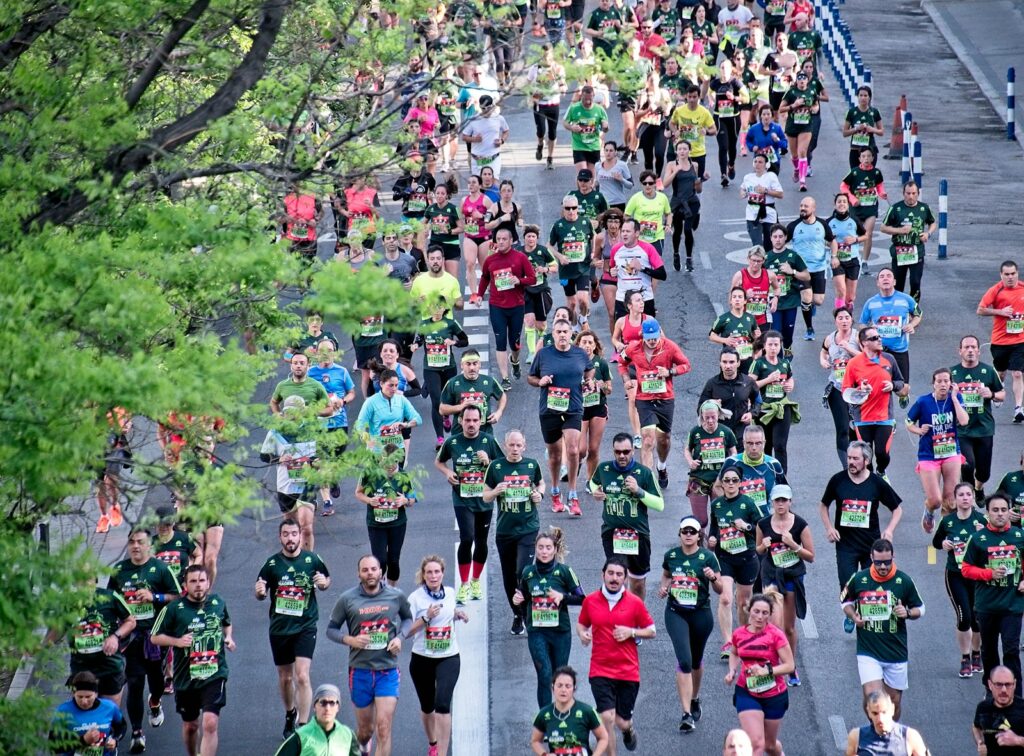
5. **Step 5: Understand the Global Marathon Landscape**Part of preparing for your marathon journey is understanding the vast and vibrant global community you’re joining. With over 800 marathons organized worldwide annually, the options for choosing your race, or even dreaming of future ones, are immense. From bustling cityscapes to breathtaking natural environments, there’s a marathon for every preference, each offering a unique experience and a chance to be part of a grand athletic tradition.
Among these numerous events, a select few stand out as the most prestigious. The World Marathon Majors series comprises the marathons of Berlin, Boston, Chicago, London, New York City, Tokyo, and Sydney. These races are not just highly competitive, attracting elite athletes vying for significant prize money, but also draw tens of thousands of recreational runners, transforming city streets into festivals of human endurance. Participating in one of these majors is often a bucket-list goal for many runners, offering an unparalleled atmosphere and global camaraderie.
Beyond the majors, other notable large marathons include those in Amsterdam, Honolulu, Paris, Rotterdam, Stockholm, the United States Marine Corps Marathon, Los Angeles, and Rome. The Boston Marathon holds the distinction of being the world’s oldest annual marathon, held every year since 1897, purposefully linking the Athenian and American struggles for democracy. Europe’s oldest annual marathon, the Košice Peace Marathon, has been running since 1924. This diverse array means you have a spectrum of choices, whether you seek a historic course, a scenic route, or a bustling urban race, all contributing to the incredible global marathon landscape.
Read more about: 12 Thriller-Level Events That Had Us on the Edge of Our Seats in 2025: Real-Life Suspense & Twists You Won’t Believe!
6. **Step 6: Be Aware of Diverse Participation Formats**As you immerse yourself in the world of marathon running, it’s inspiring to see the incredible breadth of participation, extending far beyond traditional foot races. Recognizing the diverse formats available showcases the inclusive spirit of the sport and highlights that the marathon challenge is adaptable for various athletes, demonstrating human resilience and innovation in overcoming physical limitations. This awareness can broaden your perspective and appreciation for all competitors.
A significant aspect of this inclusivity is the prominent wheelchair division featured in many marathons. These athletes, often starting their races earlier than their running counterparts, showcase extraordinary speed and strength. The pioneering spirit of individuals like Bob Hall, who won the first wheelchair marathon in Toledo, Ohio, in 1974, set the stage for these divisions to become integral to major races.
Hall’s participation in the 1975 Boston Marathon helped inaugurate its wheelchair division, which by 1977 was declared the US National Wheelchair Championship. This recognition paved the way for more formal structures and support for wheelchair athletes.
Today, wheelchair athletes are celebrated globally, with competitions like the Boston Marathon awarding significant prizes to push-rim athletes. Record-holders such as Ernst van Dyk, with ten Boston Marathon wheelchair division wins and a world record of 1:18:27, and Jean Driscoll, with eight wins and a women’s world record of 1:34:22, are legends in their own right. Even after initial bans, as seen with the New York City Marathon in 1977, legal battles and persistent advocacy led to the re-establishment and official addition of wheelchair divisions, cementing the marathon as a truly universal test of endurance. Understanding these diverse participation formats reinforces the message that the marathon is a challenge for every determined heart.
Read more about: Mariah Carey’s Unprecedented Vegas Takeover: The ‘Demand’ That Commands Sin City’s Stage for the Holiday Season
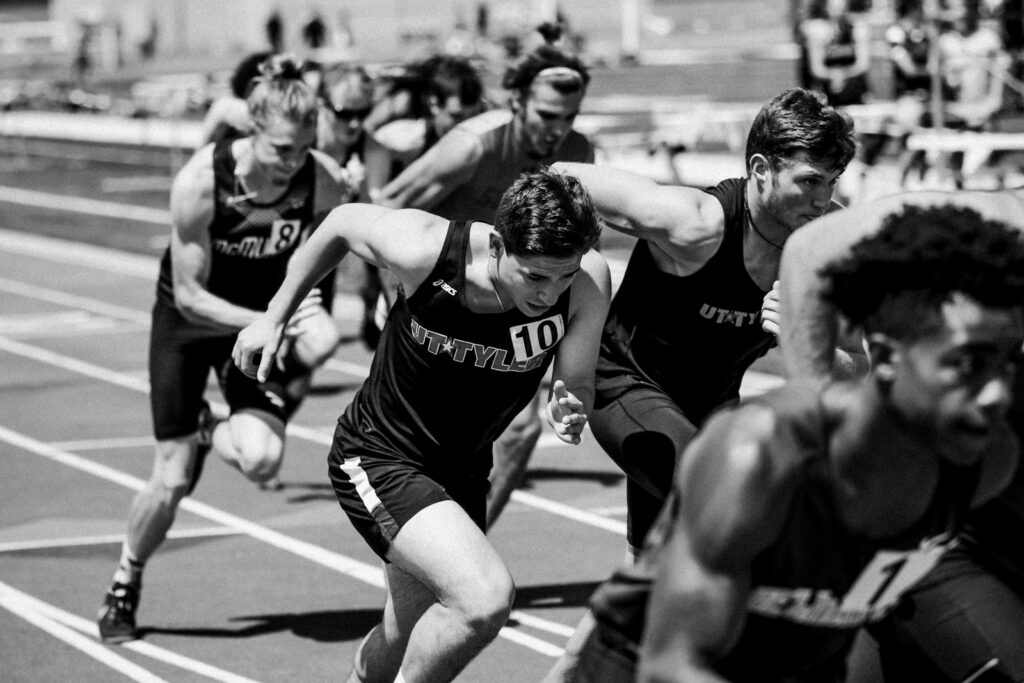
7. **Step 7: Insights into Elite Performance and World Records**The marathon is a stage for extraordinary athletic feats, with world records serving as the ultimate benchmark. Officially recognized by World Athletics since 2004, these records encapsulate peak speed and endurance, evolving from earlier “world bests” that acknowledged inherent course variations. Strict standards ensure fairness, yet differing elevations and terrains mean exact comparisons remain a constant challenge.
To achieve record-breaking times, elite athletes require precise conditions. Typically, the fastest performances occur on flat courses near sea level, under ideal weather, often with pacemakers maintaining a relentless pace. Kelvin Kiptum of Kenya exemplifies this, setting the men’s world record at 2 hours and 35 seconds at the 2023 Chicago Marathon. Ruth Chepng’etich, also from Kenya, redefined women’s endurance, clocking 2 hours, 9 minutes, and 56 seconds at the 2024 Chicago Marathon, becoming the first woman under 2:10.
The “All-time top 25” lists reveal a constellation of talent, including Eliud Kipchoge, Kenenisa Bekele, Sifan Hassan, and Paula Radcliffe. While Kipchoge’s unofficial sub-2-hour attempts showcase potential beyond limits, they aren’t official records due to assisted conditions. This strict adherence to rules, even disqualifying times from “assisted courses” like the Boston Marathon, highlights the meticulous validation processes for these incredible achievements.
Read more about: The Multifaceted Career of Jim Carrey: Exploring His Journey from Comedy Dynamo to Acclaimed Dramatic Actor
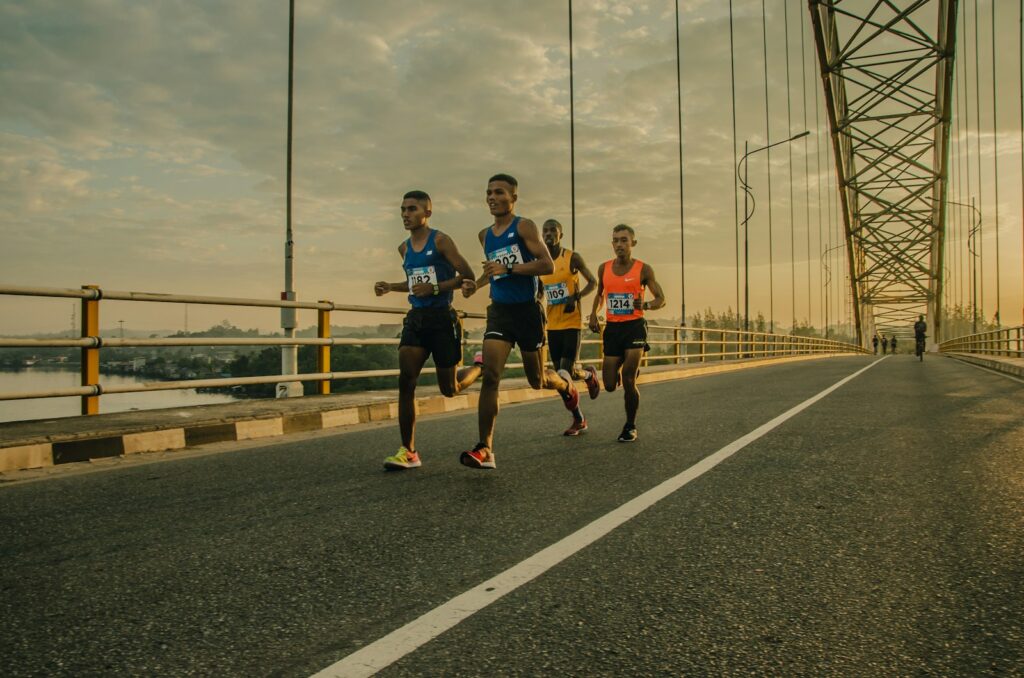
8. **Step 8: Critical Health Management: Training, Hydration, and Avoiding the Wall**A safe and successful marathon journey hinges on meticulous health management, integrating physical exertion with a deep understanding of the body’s needs. Adhering to sound training principles is paramount, as overlooking crucial aspects can lead to injuries or a diminished race experience. This holistic approach ensures preparedness for the demanding 42.195 kilometers.
Central to health management is understanding glycogen, stored carbohydrates essential for endurance. Depletion of these reserves during long runs causes “hitting the wall”—a sudden, severe fatigue often striking around 30-35 kilometers. Strategic nutrition and proper in-race fueling are critical to prevent this, maintaining energy and mental focus. Additionally, managing body temperature and hydration is non-negotiable; overheating or dehydration significantly impairs performance and poses serious health risks, necessitating a well-planned fluid intake strategy.
Aspiring marathoners must also consider cardiac health. While running is generally beneficial, intense endurance can stress the cardiovascular system. A thorough medical check-up before training is highly recommended to identify any underlying conditions. Post-marathon recovery is equally vital; the body undergoes immense stress and requires ample rest, rehydration, and nutrient-rich food to repair and rebuild. Prioritizing recovery ensures a sustainable and healthy running future, allowing you to enjoy the long-term benefits of your achievement.
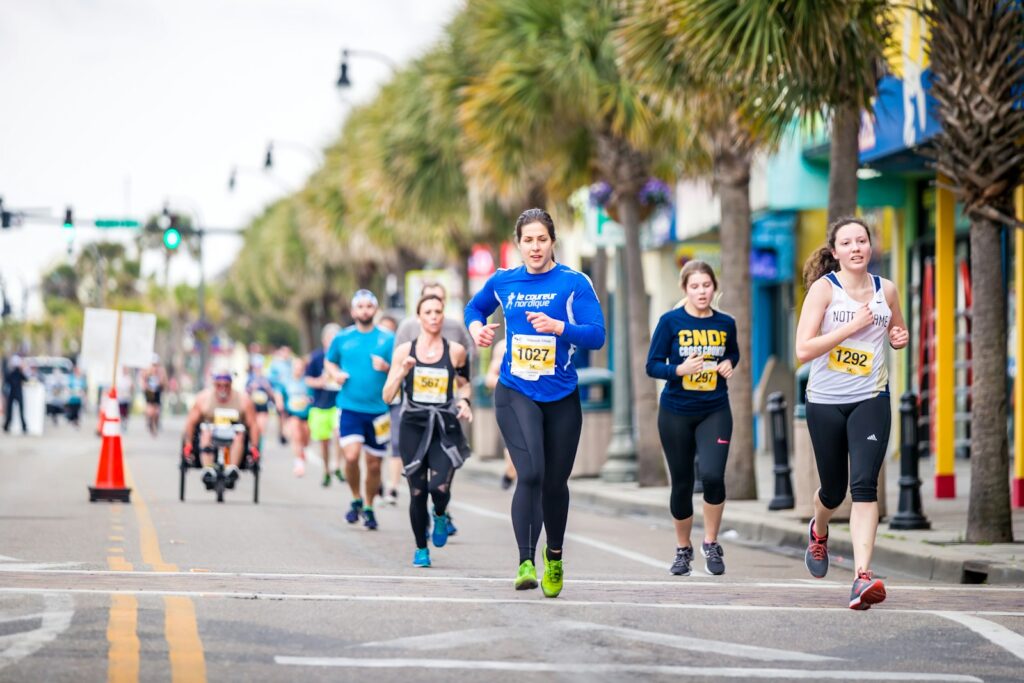
9. **Step 9: Inspiring Tales of Endurance: The Oldest and Youngest Marathoners**The marathon course, though standardized, provides a unique stage for human determination, exemplified by its oldest and youngest participants. These runners defy conventional age expectations, proving that a passion for running can ignite at any stage of life. Their inspiring stories resonate deeply, encouraging countless others to pursue their own athletic dreams, regardless of perceived limitations.
Among the venerable elders, Fauja Singh stands out, completing the Toronto Waterfront Marathon at an unofficial 100 years old in 2011. His age, though unverified, captured global attention. Johnny Kelley, a Boston Marathon legend, ran his last full race at 84 in 1992, having won twice. His 61 starts and 58 finishes at Boston, a standing record, symbolize profound commitment. Women like Gladys Burrill (92, Honolulu Marathon) and Harriette Thompson (92, Rock ‘n’ Roll San Diego) also set records for oldest female finishers, alongside Ed Whitlock, who ran sub-3 hours at 74 and sub-4 hours at 85.
On the younger end, prodigies such as Budhia Singh from India completed his first marathon at age five, showcasing incredible talent. However, concerns for his health led to a temporary ban. This delicate balance between nurturing talent and protecting child athletes remains crucial. Other remarkable young achievements include Mary Etta Boitano, under 4 hours at 7; Julie Mullin, sub-3 hours at 10; and Carrie Garritson, under 2:50 at 11. These inspiring feats underscore the importance of careful guidance for young runners.
10. **Step 10: Inspiring Tales of Endurance: The Spirit of Multiple Marathon Challenges**For many, a single marathon is a monumental achievement, but for some, the challenge extends far beyond, embracing a relentless pursuit of endurance through numerous races. This dedication has fostered a vibrant subculture where athletes push personal boundaries by completing an extraordinary number of marathons, often within organized clubs or through ambitious individual quests. It stands as a powerful testament to the unyielding spirit that defines the marathon world.
The “100 Marathon Club” in the UK and Ireland celebrates runners completing 100 or more races of marathon distance. Legends like Roger Biggs (700+ marathons) and Brian Mills (800th in 2011) exemplify this. Others pursue unique geographical goals: over 350 individuals have run a marathon in every U.S. state plus D.C., including youngest women Beverly Paquin and Morgan Cummings at 22, and amputee Chuck Bryant. Many have also conquered marathons on all seven continents or in each Canadian province, demonstrating global endurance.
These challenges often symbolize triumph over adversity. Patrick Finney, overcoming multiple sclerosis, became the first with MS to finish a marathon in every U.S. state in 2011. British adventurer Sir Ranulph Fiennes completed seven marathons on seven continents in seven days in 2003, just months after a heart attack. More recently, Larry Macon set a Guinness World Record with 238 marathons in a year, and Hilde Dosogne ran 366 marathons in a year in 2024, exemplifying the ever-expanding limits of human endurance.

11. **Step 11: Charity Involvement and the Marathon’s Philanthropic Heart**While marathon running is a profound personal test of endurance, it often transforms into a powerful vehicle for philanthropy, channeling individual effort into collective good. The arduous journey of 42.195 kilometers becomes a symbolic quest, drawing attention and vital funds to various causes close to runners’ hearts. This charitable dimension adds a profound layer of meaning, ensuring each stride contributes not only to personal accomplishment but also to societal benefit.
One of the most iconic examples of charity intertwined with marathon effort is Terry Fox’s “Marathon of Hope” in 1980. Having lost a leg to cancer, Fox embarked on a cross-Canada cancer fundraising run with one artificial leg. He maintained an average of over 37 kilometers daily for 143 consecutive days, covering an astonishing 5,373 kilometers. His incredible journey, driven by the desire to raise funds and awareness for cancer research, stands as a testament to the marathon’s capacity to inspire hope and generate substantial charitable contributions, transcending mere athletic competition.
Terry Fox’s legacy exemplifies how the sheer visibility and inspirational nature of marathon running can rally widespread public support. His selfless act spurred donations and remains a powerful symbol of perseverance and giving. The dedication required for such a rigorous challenge translates into a compelling narrative for fundraising, encouraging friends, family, and the wider community to contribute. This symbiotic relationship between athletic endeavor and philanthropy has become a hallmark of modern marathon culture.
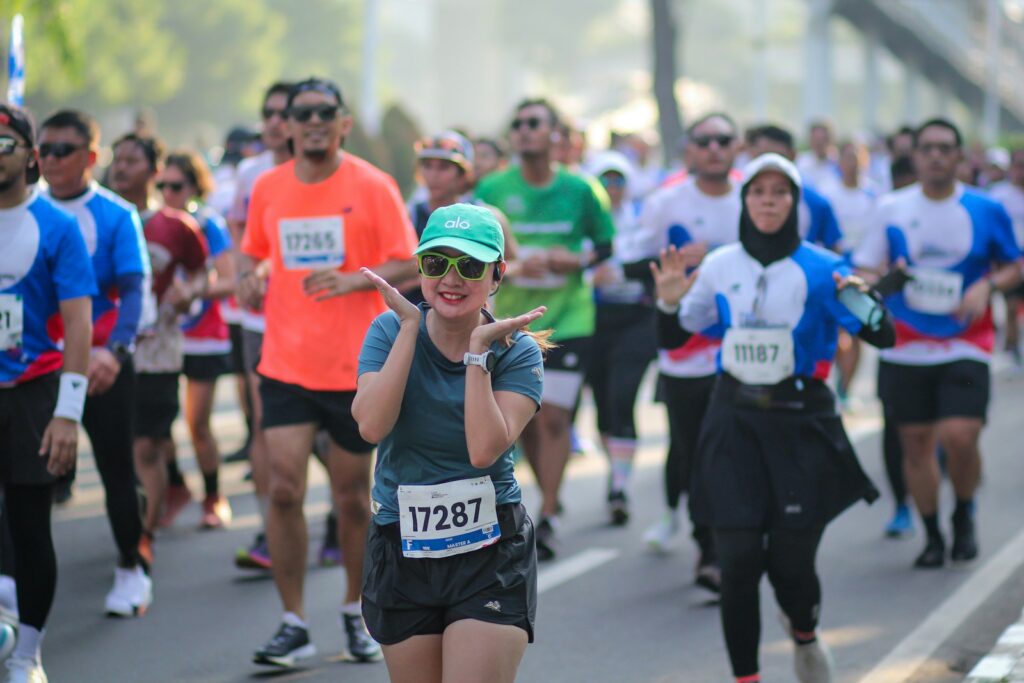
12. **Step 12: The Global Phenomenon: Culture and Broader Impact of Marathon Running**The marathon is far more than just a race; it has evolved into a global cultural phenomenon, deeply embedded in the collective consciousness of numerous communities. Its broad impact extends beyond elite competition and individual challenges, shaping societal attitudes towards fitness, perseverance, and community engagement worldwide. From its ancient origins to its modern-day manifestations, the marathon continues to inspire and unite people across diverse backgrounds, fostering a shared experience of human potential.
The United States has experienced intense “marathon mania” periods, notably after Johnny Hayes’ 1908 Olympic victory, which spurred early long-distance running growth. Frank Shorter’s 1972 Olympic marathon win later ignited an even more fervent national interest, transforming the activity into a widespread aspiration. This “mania” is not confined to the West; marathon running has become an “obsession” in China, with races skyrocketing from 22 in 2011 to 400 by 2017, reflecting a profound shift in fitness culture and the sport’s rapid global integration.
The marathon’s enduring appeal stems not only from its physical demands but also from its ability to cultivate community and shared purpose. Tens of thousands participate in major city marathons, supported by cheering crowds, forming a worldwide network united by a common goal. Historical links, such as the Boston Marathon’s connection to struggles for democracy, or the Istanbul Marathon crossing two continents, imbue the race with rich cultural narratives that resonate deeply with participants and spectators alike, solidifying its status as a truly universal and inspiring human endeavor.
As we conclude this exploration of the marathon world, it’s clear that the journey of 42.195 kilometers is a rich tapestry woven with threads of history, personal grit, elite performance, and global community. From understanding the precise distance and its ancient legends to appreciating the diverse formats and the inspiring tales of individuals pushing boundaries, every aspect of the marathon reinforces its status as a monumental human achievement. Whether you’re aiming for a personal best, running for a cause, or simply aspiring to cross that finish line, the insights gleaned here will empower you to navigate your path safely, embrace the challenge, and ultimately, discover the extraordinary runner within you.


